Since Arms Race Nutrition (ARN) burst onto the supplement scene in 2019, its captain Julian Smith, famed for his natural bodybuilding prowess, has launched it into the stratosphere as if it were an intercontinental ballistic missile (ICBM) – very consistent with the Arms Race name.
His collaboration with pro bodybuilder and Core Nutritionals CEO Doug Miller has consistently brought us some of the finest products on the market in any product category.
ARN knocked it out of the park with the Arms Race Foundation Bar, for example, which is a PricePlow staff all-time favorite (see the two new Foundation Bar flavors released at the same time as this).
An Arms Race Never Stops: Announcing Harness Evolution
Key to the concept of an arms race is continual refinement. This brings us to Arms Race Nutrition's Harness Evolution, an upgraded version of their famous Harness pre-workout supplement.
It leaked in PricePlow Podcast episode #083 with ARN's David Dodrill, who assured us that the original Harness is sticking around - but Harness Evolution is for those big days.
There's also an Orange Julian flavor that is downright uncanny - orange cream like you've never experienced!
The label and videos are below -- but first, be sure to sign up for PricePlow's Arms Race Nutrition news alerts so that you get notified when it's on sale:
Arms Race Nutrition Harness Evolution – Deals and Price Drop Alerts
Get Price Alerts
No spam, no scams.
Disclosure: PricePlow relies on pricing from stores with which we have a business relationship. We work hard to keep pricing current, but you may find a better offer.
Posts are sponsored in part by the retailers and/or brands listed on this page.
This area is reserved for Team PricePlow's upcoming videos.
Subscribe to our channel and sign up for notifications so you catch it when it goes live!
Arms Race Harness Ingredients
In a single 2 scoop (24.5 gram) serving of Harness Evolution from Arms Race Nutrition, you get the following:
-
Beta Alanine – 6,400 mg
Beta-alanine is one of two precursors to carnosine.[1]
Carnosine is a molecule that helps your muscles get rid of lactic acid. The reason this matters is that lactic acid buildup during exercise is a huge contributor to muscular fatigue. Thus, speeding up the removal of lactic acid by upregulating carnosine can improve athletic endurance.
So what about the other carnosine precursor? Well, it's called histidine, and we don't worry about supplementing with it owing to its ubiquity in common foods. According to studies that have compared the effectiveness of beta-alanine supplementation and histidine supplementation, the former is really what limits your body's ability to produce carnosine.[2,3]
So why not just supplement with carnosine? The answer is that its oral bioavailability is low. Beta-alanine supplementation is better absorbed, so it's a more effective carnosine-boosting strategy.
We're interested in section (B) here, where beta alanine alone shows great results compared to placebo.[4]
Two big meta-analyses – one from 2012[5] and the other from 2016[4] – have concluded that beta-alanine is most effective when used to support exercise at a specific intensity level. That intensity seems to be an effort that can be sustained for anywhere from 30 seconds to 10 minutes.[4]
Don't worry about the beta-alanine tingles
One common side effect of beta-alanine supplementation is a tingling sensation in the face and upper body. This is mildly uncomfortable, but according to a 2019 safety review on beta-alanine supplements, it's harmless.[6]
Great dose!
The 6,400 mg dose of beta-alanine is twice the usual 3,200 mg dose. So is it more effective? According to the official International Society of Sports Nutrition position on beta-alanine, 6 grams daily is more effective than lower doses.[1]
Some research models support the notion that beta-alanine supplementation helps get to carnosine saturation.[7] With that in mind, ARN sought to get their users there faster - and that's done by doubling the standard dosage.
Two studies have demonstrated that this dose appears to double muscle carnosine content increases during the first 2 to 4 weeks of supplementation,[8,9] which is right in line with running a tub of Harness Evolution.
In terms of performance, at least two studies have shown that a beta alanine intake of 179 grams over the course of 28 days -- 6.4 grams per day -- can significantly increase muscle performance in endurance events compared to placebo.[10,11]
So yes, there should be additional benefits from doubling the dose.
-
L-Citrulline – 6,000 mg
We always love seeing citrulline show up in pre-workout formulas.
Our label leak on Instagram, taken from the PricePlow Podcast.
This ingredient is an industry warhorse – it's one of the most effective and economical nitric oxide (NO) boosting[12] ingredients in existence.
Citrulline is conditionally essential. This means that although you might not need exogenous citrulline under good conditions, metabolic adversity – like illness or stress – can increase your requirements to the point where your body can't make enough.
Here's how citrulline gets converted into NO: Citrulline → Arginine → NO
Looking at this, you might ask: why not just supplement with arginine instead?
The industry used to take that approach, until it was discovered that the oral bioavailability of arginine is pretty bad, and citrulline is much better.[13,14] So here we have a situation similar to what we discussed in the beta-alanine section – the precursor is a better strategy for upregulating the target molecule.
As for NO itself, this is a molecule that hardly needs any introduction – it triggers vasodilation, a process where your arteries grow in size, allowing for better circulation and less cardiovascular strain. NO-driven vasodilation can decrease both blood pressure and heart rate.[15-17]
Because of the improvement to circulation, your body can distribute nutrients to cells more efficiently, and also remove their waste more efficiently. This naturally leads to improvements in both athletic performance and recovery.
So here's what the citrulline research says it can do:
The Arginine Citrulline Cycle with a breakout showing the arginine-to-nitric oxide reaction. Image courtesy Wikimedia with added biochemistry sources.[18,19]
- Boost power and oxygen uptake during exercise[20]
- Extend athletic endurance by approximately 50%[21]
- Reduce soreness after exercise [21]
- Increase growth hormone (GH) production in response to exercise[22]
- Prevent protein catabolism[23]
- Increase muscle protein synthesis following exercise[24,25]
Ornithine
Citrulline can also boost ornithine, an amino acid your body uses to detoxify ammonia.[26,27] Ammonia, like lactic acid is one of those metabolic waste products that can produce fatigue – both mental and physical – as it accumulates in your tissues.
So, citrulline's ability to increase ornithine production is probably part of its endurance-boosting effect.
Ornithine can also help you sleep better by improving your cortisol-to-DHEA ratio.[27]
-
Betaine Anhydrous – 2,500 mg
Trimethylglycine (TMG), known in common parlance as betaine, is an ergogenic aid and osmolyte.
A landmark 2013 study showed that 2.5 grams of betaine every day can have profound effects on body mass and strength[28]
Ergogenic aids are, simply, any substance that can improve your body's capacity to do physical work. This translates into increased athletic performance.
So how does betaine do this?
Betaine donates methyl groups
Betaine is kind of like creatine in its effects, and has a common mechanism of action: both supplements increase your body's production of adenosine triphosphate (ATP),[29] which is the energy currency of your cells. Boosting ATP means boosting cellular energy.
Creatine boosts ATP production by donating phosphate groups, but betaine does so by donating methyl groups.[30]
In fact, betaine is one of the most powerful methyl donors known to supplement science.[31] Methyl donors are important because methyl groups are ubiquitous in the human body, and required for tons of different metabolic processes.
For example, your body needs ample methyl groups to metabolize homocysteine, an amino acid that can cause cardiovascular damage if it builds up too much in your blood,[32] and betaine supplementation has been shown to lower homocysteine levels.[33]
Osmolyte
Obviously, increasing cellular energy supply can boost athletic performance.
But betaine's status as an osmolyte is at least as important for its ergogenic effects.
Osmolytes alter the osmotic pressure around your body's cells. In betaine's case, it increases osmotic pressure, which has the effect of forcing water into your cells. As a result of this betaine-induced osmotic pressure, your cells end up with more water than usual.
This state is called cellular hyperhydration, and it comes with some important benefits. More cellular water means more nutrients and fuel for your cells, which can help protect them against metabolic stress[28,34] and heat stress.[35]
This means your cells can perform better during exercise, leading to improved strength, power output, and when taken long-term, body composition.[36-41]
Body composition
Betaine's ability to improve body composition is particularly compelling.
A 2013 study found that a 2,500 milligram daily dose of betaine – the same dose used in 2 scoops of Harness Evolution – was enough to cause a 5 pound muscle gain and 6 pound fat loss in subjects who took it for 6 weeks.
That's a 3 point drop in body fat percentage.[28,42]
A 2018 study found that female collegiate weightlifters who took betaine for 10 weeks lost 4 pounds more fat compared to a placebo control group.[43]
-
L-Tyrosine – 2,000 mg
Tyrosine is another great pre-workout ingredient
For three reasons: 1) thyroid support, 2) neurotransmitter production, and 3) sleep deprivation support.
Thyroid
Thyroid function is crucial for optimal performance, fat loss, and muscle gain.
And your body needs tyrosine as a precursor to its two main thyroid hormones, triiodothyronine (T3) and thyroxine (T4).[44,45]
So why is this good for a pre-workout formula? Because the two main behaviors of gym goers – intense exercise and dieting through caloric restriction – can both hammer your thyroid pretty hard by increasing cortisol production.[46-48]
The harder you work out, and the bigger your calorie deficit, the harder your thyroid will get hit, so if you're pushing your limits, a nice big dose of tyrosine can help.
Catecholamine neurotransmitters
Tyrosine is also required for the synthesis of dopamine, adrenaline, and noradrenaline.[49-51] These so-called catecholamine neurotransmitters can improve focus and motivation, which are obviously key for getting through hard workouts.
Adrenaline and noradrenaline can also help body composition, by suppressing appetite and increasing fat burning.[52]
Sleep deprivation
According to studies carried out by the U.S. military in sleep-deprived persons, tyrosine is actually a better wakefulness-promoting supplement than caffeine.[53,54]
-
Nitrosigine (Inositol-Stabilized Arginine Silicate) — 1,500 mg
Nitrosigine is another awesome NO booster. It's a patented compound of arginine, inositol, and potassium silicate[55] developed by Nutrition21, one of the supplement industry's premier ingredient designers.
Building a better arginine
A nitric oxide booster that improves cognition?! Yes - Nutrition21 passed around this helpful infographic after the Nitrosigine cognition study on healthy young adults was published.[56]
Remember how in the citrulline section, we talked about arginine's poor oral bioavailability? This is the problem Nitrosigine was designed to solve.
Nutrition21 figured out that by binding arginine to inositol and potassium silicate, you can protect that arginine molecule from being degraded by stomach enzymes.[57] This enables it to pass through the stomach intact, and be absorbed through intestinal tissue into your bloodstream. The upshot is vastly improved bioavailability.[58]
Unlike generic arginine, Nitrosigine is very effective at raising arginine and hence, NO blood levels. It works in 30 minutes and the effect lasts for six hours.[59,60]
Is nitric oxide a nootropic?
With Nitrosigine, we'll get all the physical and athletic benefits mentioned in the citrulline section.
But the research on Nitrosigine found something else too: cognitive benefits.
If you think about it, this makes sense – the brain needs blood, oxygen and glucose no less than any other tissue in the body. In fact, the brain requires a disproportionately high amount of all these things to function optimally, so improving blood flow to the brain through NO upregulation could definitely be expected to improve brain function.
In research settings, Nitrosigine has been shown to be especially good at preventing the temporary cognitive impairment that typically follows intense exercise.[61]
Even in subjects who hadn't recently exercised, Nitrosigine was able to improve multitasking ability.[62]
One 2015 study found that a 1,500 mg dose of Nitrosigine, taken daily for three days, significantly increased perceived energy levels in those taking it.[59]
A newer study from 2021 found that Nitrosigine can also improve short-term memory scores in healthy young adults.[56]
Inositol benefits
The inositol molecule in Nitrosigine has some interesting benefits that are independent of NO.
Inositol is required by your brain for the maintenance of cellular membranes,[63,64] and can increase your brain's production of both dopamine and serotonin.[64]
Inositol deficiency is associated with cognitive dysfunction.[65]
-
Yerba santa (Eriodictyon californicum) [Aerial Parts] Extract (as SantEnergy Nu) – 400 mg
SantEnergy is a trademarked extract of yerba santa.
Yerba santa, native to California and Oregon, has a ton of names in colloquial English – it's also been known as mountain balm, bear's weed, gum bush, gum plant, and consumptive weed. Spanish and French have a similarly huge number of names for it.
It's been used for millennia in the traditional medicine of native tribes from Southern California and Northern Mexico. These cultures employ it for the purpose of improving breathing and decreasing respiratory irritation.[66]
Modern scientific research has identified yerba santa as a therapeutic potentially effective in relieving bronchial congestion, asthma, and hayfever.[67]
Anecdotally speaking, we have both experienced and heard reports that healthy people who take yerba santa feel like their airways are "opening up," which can make intense exercise more comfortable. This is the main reason why we're seeing yerba santa in more and more pre-workout formulas.
But yerba santa can also increase your body's rate of caloric expenditure[68] by upregulating thermogenesis,[69] a process in which your body burns calories for heat.
This can help improve body composition by accelerating weight loss, assuming you hold your calorie intake constant.
-
Caffeine Blend – 405 mg Yield
Please note that we have two different forms of caffeine in Harness Evolution – 300 mg of caffeine anhydrous, which is pure caffeine, plus another 105 mg of caffeine from the 150 mg dose of zumXR.
This adds up to a 405 mg total dose of caffeine per 2 scoop serving of Harness Evolution. That's a big dose of caffeine.
If you are not absolutely certain you can tolerate this dose of caffeine, DO NOT start with 2 scoops of Harness Evolution. Start with 1 scoop, or maybe even a fraction of a scoop.
If you are confused or uncertain, ask your doctor about how much caffeine you can take at once.
-
Caffeine Anhydrous – 300 mg
Caffeine is another potent ergogenic aid, famed for its ability to ward off fatigue while promoting wakefulness and increasing psychomotor vigilance.
Known since 1991, very high dose caffeine can seriously boost performance.[70] As you can see, it's quite variable amongst users - future research would show that caffeine's effects depend on your genotype.
The anti-fatigue effects of caffeine can be put down to its inhibitory effect on adenosine receptors.[71] Adenosine causes fatigue as it builds up in your brain, so blocking its action on the adenosine receptor can prevent the onset of that fatigue.
When adenosine is downregulated with caffeine, the brain is overall more active,[71] leading to better focus and motivation.
Caffeine is also significantly dopaminergic, helping your brain produce more dopamine, its primary focus and motivation neurotransmitter.[72]
Ergogenic, pro-metabolic effect
We're all pretty familiar with caffeine's ability to fight fatigue while increasing focus and motivation, giving us energy in a figurative sense.
What's not as widely known or appreciated is that caffeine can literally give us more energy by increasing cellular energy production.
It does this my activating AMPK-activated protein kinase (AMPK), which turns up your body's rate of fat burning and makes more energy available to your cells for doing work.[73,74]
Caffeine also inhibits phosphodiesterase, an enzyme that breaks down cyclic adenosine monophosphate (cAMP).[73,74] This has the same effect as activating AMPK – cAMP tells your cells to produce more ATP, which leads to additional calorie burn and a bigger cellular energy supply.[75]
This increase in cellular metabolism is what enables caffeine to boost strength, power, and endurance in both endurance-based and high-intensity forms of exercise.[76]
-
zumXR (yields 70% Caffeine) – 150 mg
zumXR gives us another 105 mg (70% of 150 mg) caffeine.
This caffeine is chemically identical to the caffeine molecule in the caffeine anhydrous.
The big difference between caffeine anhydrous and zumXR is in the energy curve – zumXR is more gradually absorbed, meaning that it causes a lower peak concentration of caffeine, and a more gradual taper off, than straight caffeine anhydrous.
Anhydrous is the rapidly absorbed form of caffeine, used for an immediate energy hit.
The idea behind combining these two forms of caffeine is to give you the best of both worlds – an immediate performance boost and a gradual taper to reduce withdrawal symptoms.
-
-
VasoDrive-AP – 254 mg
VasoDrive-AP is composed of two tripeptide proteins (also known as lacto-tripeptides or LTPs) that are sourced from milk casein. They are isoleucyl-prolyl-proline (IPP) and valyl-prolyl-proline (VPP).[77]
Vaso-Drive works to improve circulation on two levels: first, and most straightforwardly, by increasing your body's expression of endothelial nitric oxide synthase (eNOS), the enzyme responsible for generating NO in your arteries.[78] But it also inhibits vasoconstriction – the opposite of vasodilation – by inhibiting an enzyme called angiotensin-converting enzyme (ACE).[77]
This has the same ultimate effect as increasing vasodilation, namely a reduction in blood pressure and heart rate. That's why prescription blood pressure medications are often ACE inhibitors.
A 2015 meta-analysis of 33 randomized controlled trials found that casein-derived LTPs are in the same ballpark as more commonly used vasodilator ingredients.
On average, they caused a 3 mmHg drop in systolic, and a 1.5 mmHg drop in diastolic blood pressure.[77]
Just for comparison, efficacious doses of citrulline reduce systolic blood pressure by about 4 mmHg.[79]
So even though you probably haven't heard of this ingredient, rest assured it's a good one – and here we have it stacked with citrulline and Nitrosigine for synergistic NO boosting effects.
-
Citicoline (Cytidine 5'-diphosphocholine) – 250 mg
Citicoline is a high-bioavailability form of choline.
Your body needs choline to build and maintain the all-important cellular membranes that enclose the contents of its cells.[80]
If you need even more pump (we don't think you should... but hey), then there's Daily Pump. The Key West flavor is meant to simulate a Sex on the Beach cocktail!
Choline is also required for the synthesis of acetylcholine, a neurotransmitter that's centrally implicated in learning and memory.[81] We often call acetylcholine the learning neurotransmitter – it's that important, particularly for memory consolidation (the conversion of short term memories into long term ones).
Acetylcholine can improve multiple dimensions of cognition – including learning, memory, and even motor skills like balance and coordination.[82,83]
What sets citicoline apart from other forms of choline is its emphasis on the mental side of things – particularly focus, attention and mental energy.[84,85]
Its two chemical constituents, choline and uridine, are both capable of independently improving blood flow to the brain, and mitochondrial function within neurons.[86]
Citicoline is also great at upregulating dopamine.[87]
This is really the feel-good form of choline, used to improve mood, focus and motivation.
-
ElevATP (Ancient Peat Extract and Apple Extract) – 150 mg
ElevATP is a mix of peat moss and apple extracts. It can boost extracellular ATP levels,[88,89] which helps optimize a huge range of important metabolic processes.
ElevATP doesn't contain ATP, but instead has many compounds that can support your body's production of ATP.[90]
After all, ATP is your body's usable energy – if your cells were your body's engine, ATP would be the gas. It's that important. Since you can deplete your reserve of ATP through exercise, supplementation can potentially boost performance by restoring it, or maybe even increasing it above baseline.
Great theory, but does it work in practice? Yes, it seems to. According to one 2016 study, the 150 mg dose of ElevATP, taken daily for eight weeks, significantly improved subjects' one rep max for squat and deadlift, as well as vertical jump velocity and power.[91]
-
CognatiQ (Whole Coffee Fruit Extract) (Coffea arabica) – 100 mg
CognatiQ used to be called NeuroFactor, an ingredient that's probably familiar to veteran supplement consumers.
It's an extract of coffee fruit, designed to help improve focus and cognitive performance. Its mechanism of action is brain-derived neurotrophic factor (BDNF) upregulation,[92] which supports neurogenesis, the birth and growth of new neurons, as well as the growth of connections between existing neurons.[89,93]
Need more focus on the opposite end of your day? Arms Race Clarity has moved from pill to flavored drink powder, changing from a "mental health" supplement towards a more energized nootropic that still brings good-mood properties!
In a nutshell, more BDNF means more neuroplasticity, the ability of your brain to physically re-model itself in response to learning. In adult brains, the primary site of neurogenesis is the hippocampus, the region of the brain where long-term potentiation (LTP) takes place.[94]
Cognitive performance correlates tightly with serum BDNF levels.[89,93-97]
Higher levels of BDNF are neuroprotective, and can decrease one's risk of several neurodegenerative illnesses.[89,93,96,97]
On the other hand, low levels of BDNF can raise your risk.[97]
Aerobic exercise boosts BDNF,[95] so putting CognatiQ in a pre-workout is a great strategy for synergistically increasing the benefits of exercise.
A 100 mg dose of coffee fruit extract – the same dose used in Harness Evolution – has been shown to increase BDNF levels by a whopping 150%.[92]
-
Huperzia serrata Extract (leaf and stem) (1% Huperzine A) – 20 mg
While citicoline can raise huperzine A levels by increasing acetylcholine production, huperzine A has the same effect from a different angle – it inhibits acetylcholinesterase, the enzyme responsible for breaking down acetylcholine.[98,99]
Besides increasing acetylcholine levels, huperzine A is also a potent antioxidant, and is particularly good for defending your neurons' mitochondria from oxidative stress.[100]
Huperzine A can also increase hippocampal neurogenesis.[101]
See our first teaser on Instagram
Conclusion
With Harness Evolution, ARN has given us the product that perhaps best lives up to the company's ethos – this is an explosively powerful and ambitious pre-workout formula that covers all the bases.
We love seeing plenty of nootropic support in here. With the CognatiQ, Nitrosigine, Huperzine A, citicoline, and tyrosine, this is a product that can get your brain and mood lifting off at maximum velocity, which is huge for workout motivation and performance.
We also appreciate the huge dose of beta alanine – this is an ingredient that seems chronically underdosed.
And if you don't need this much pump or that much beta alanine, check out the original Arms Race Nutrition Harness pre-workout, which won't be going anywhere.
Arms Race Nutrition Harness Evolution – Deals and Price Drop Alerts
Get Price Alerts
No spam, no scams.
Disclosure: PricePlow relies on pricing from stores with which we have a business relationship. We work hard to keep pricing current, but you may find a better offer.
Posts are sponsored in part by the retailers and/or brands listed on this page.
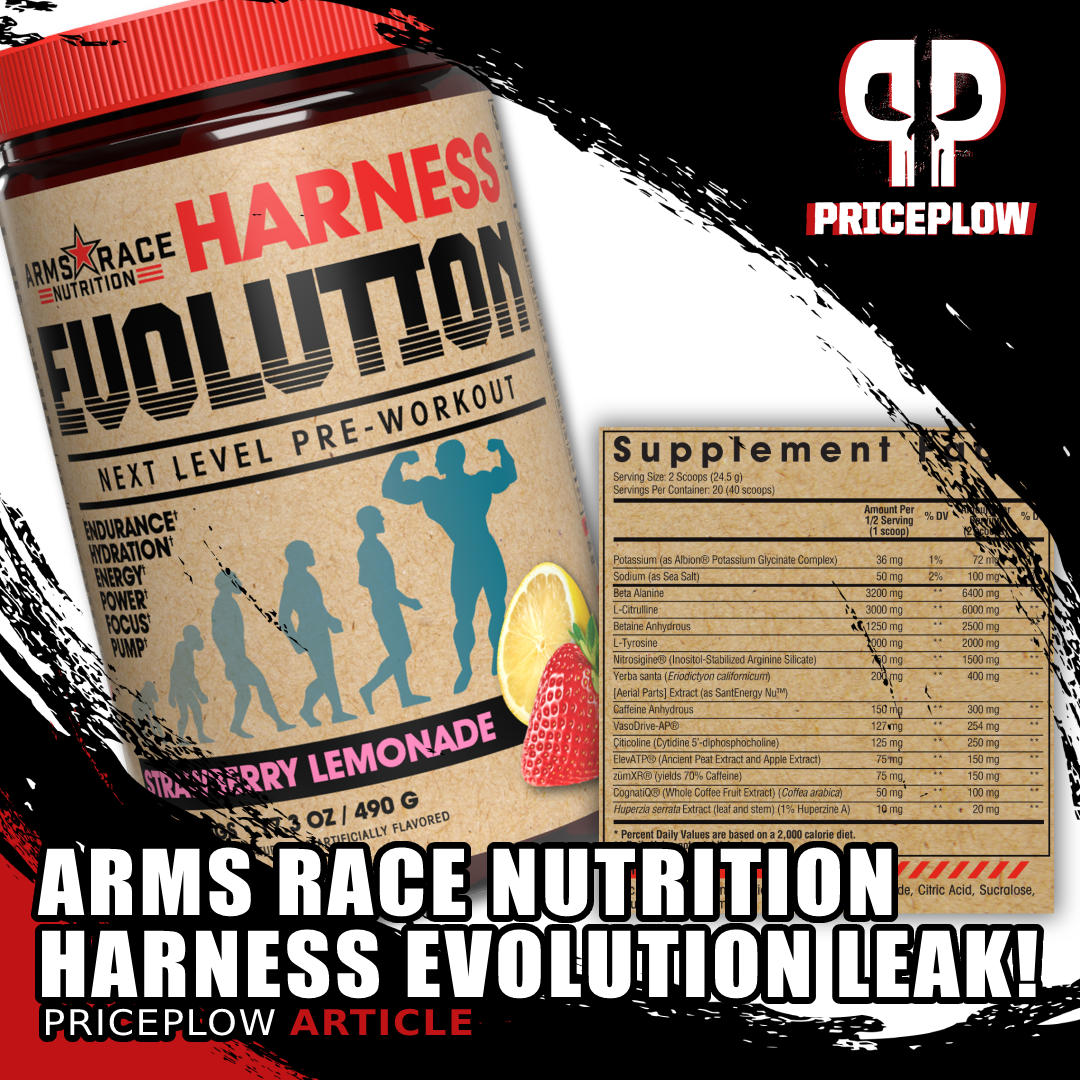
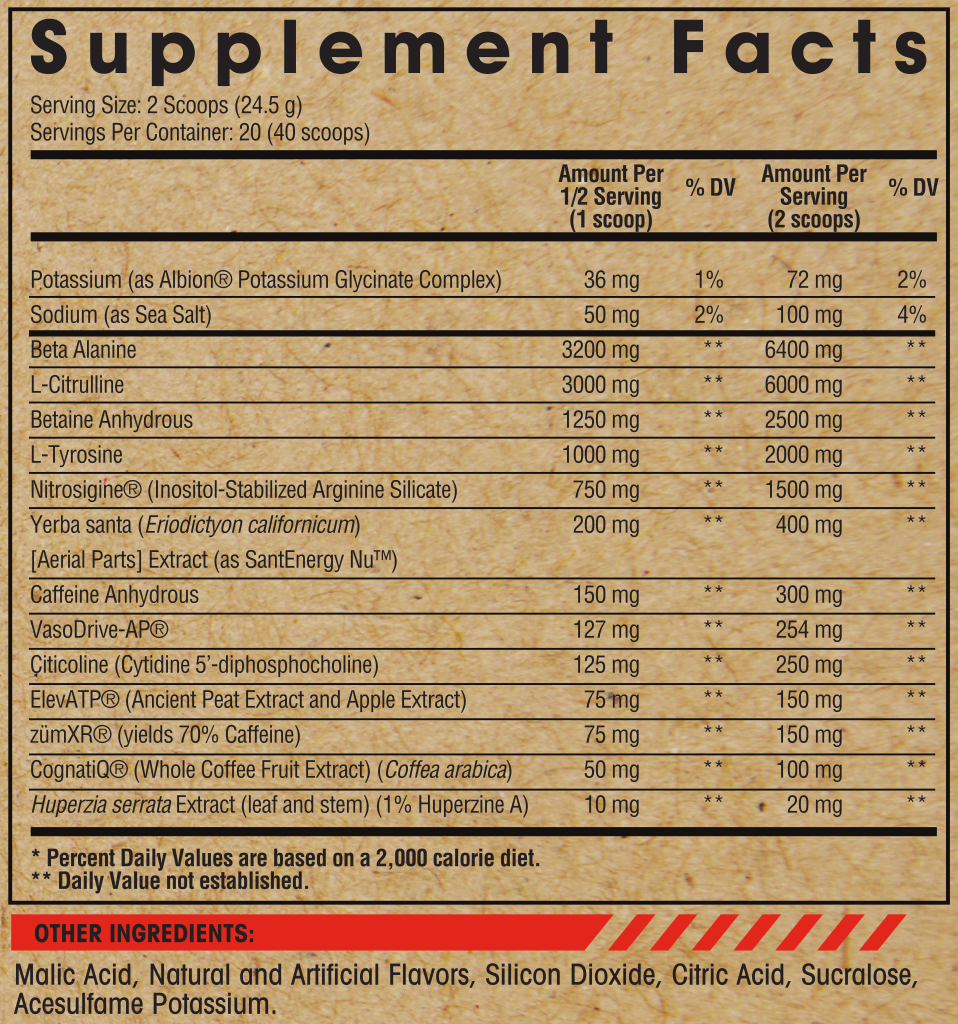
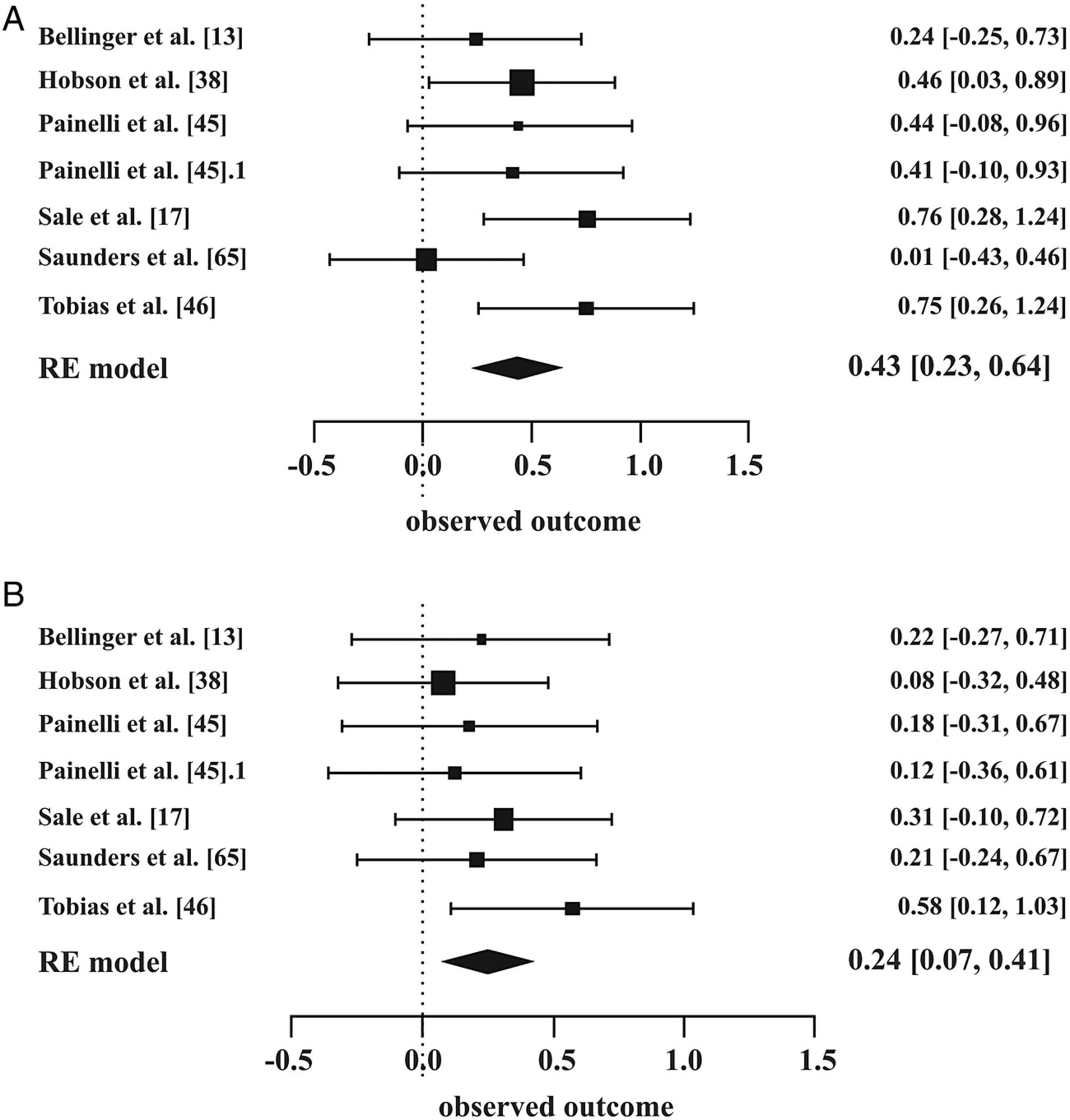
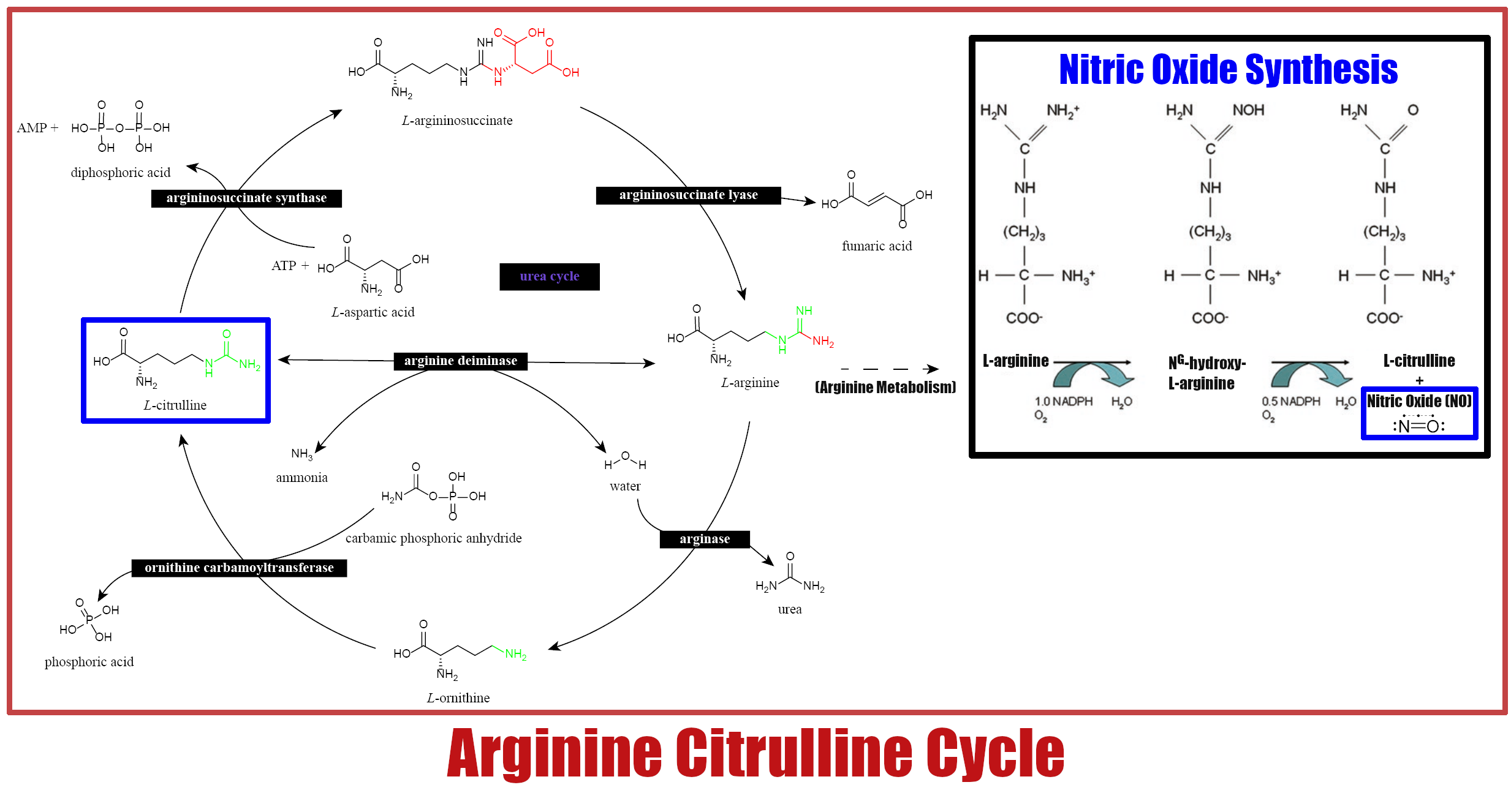

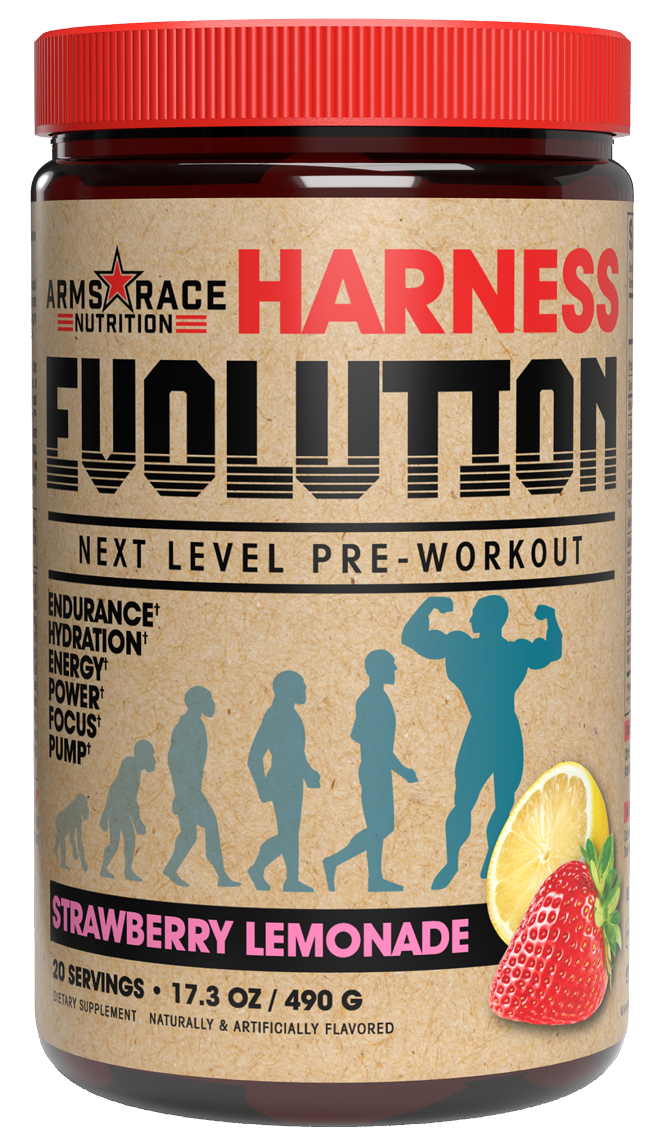
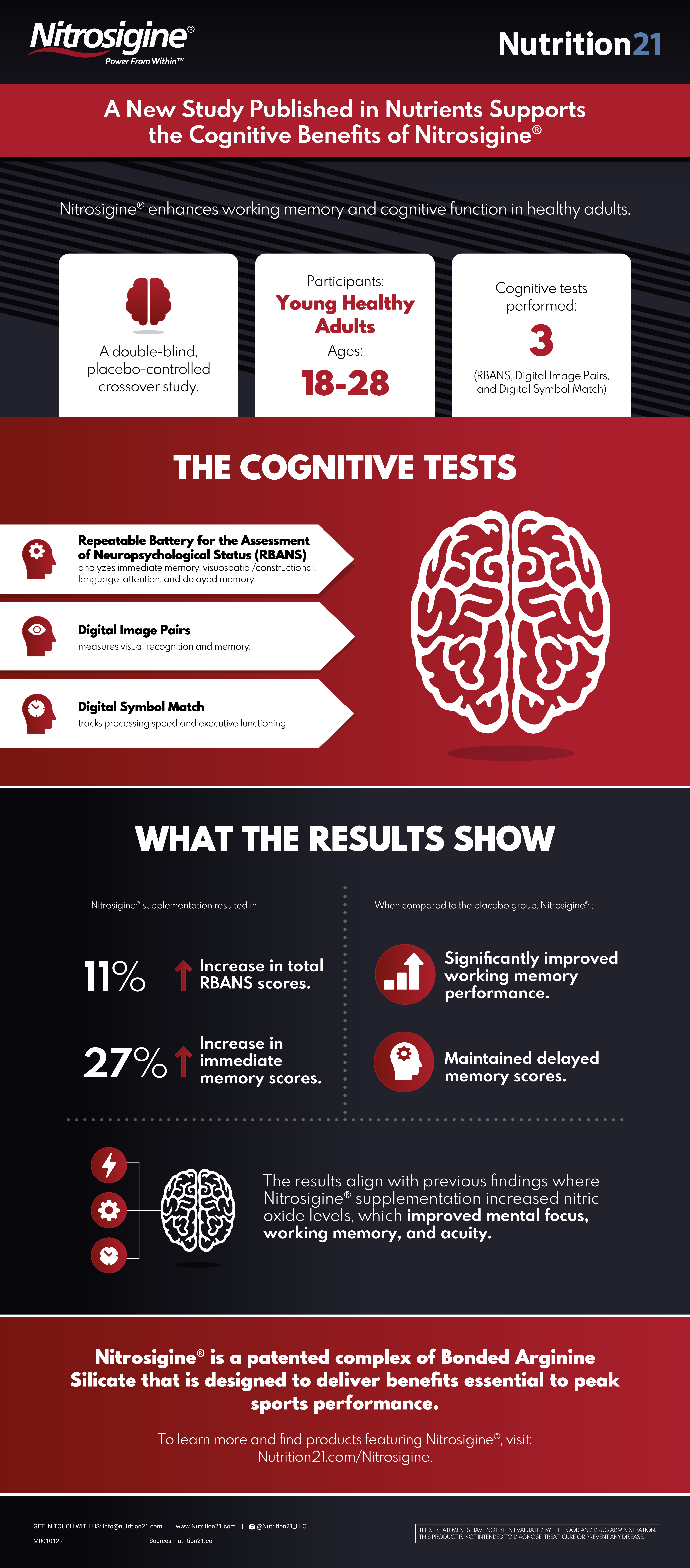
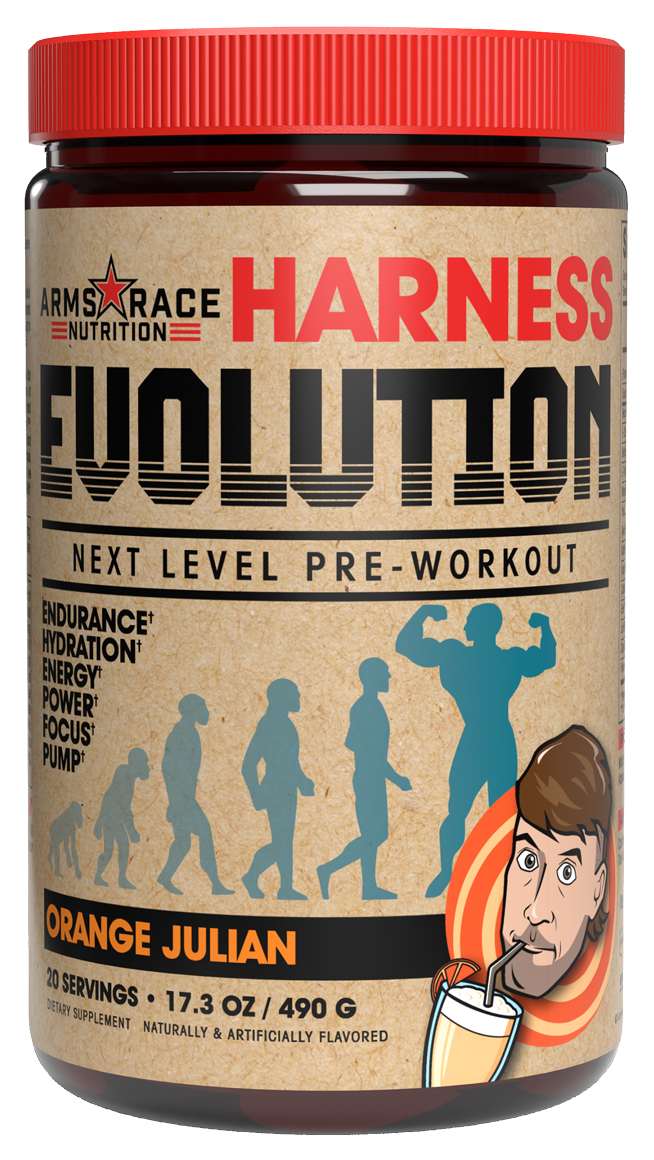
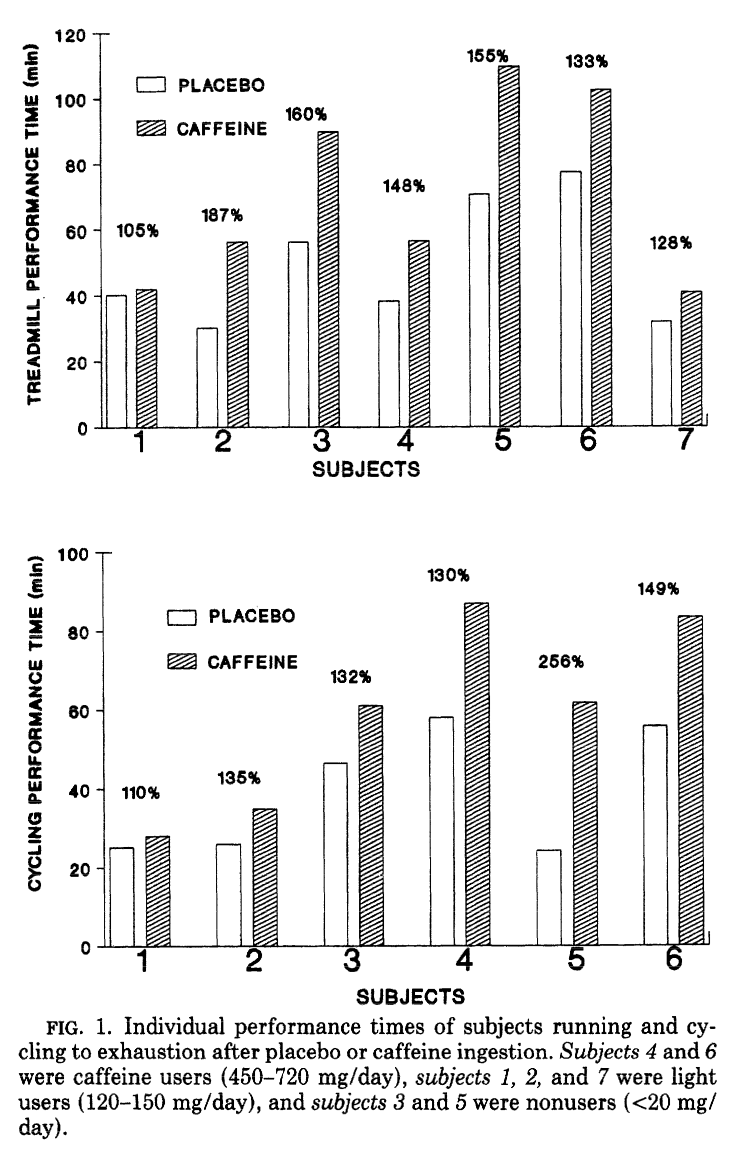

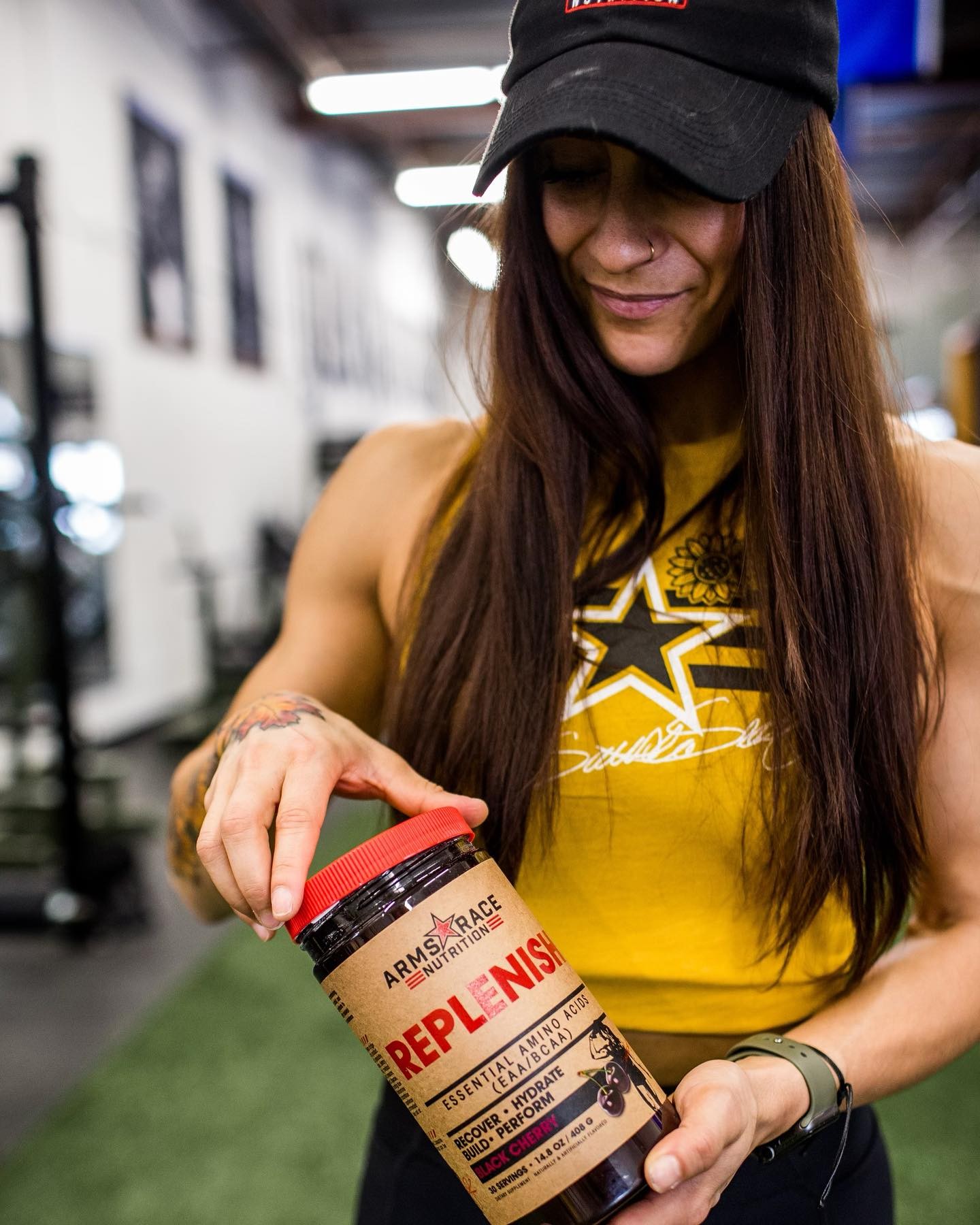
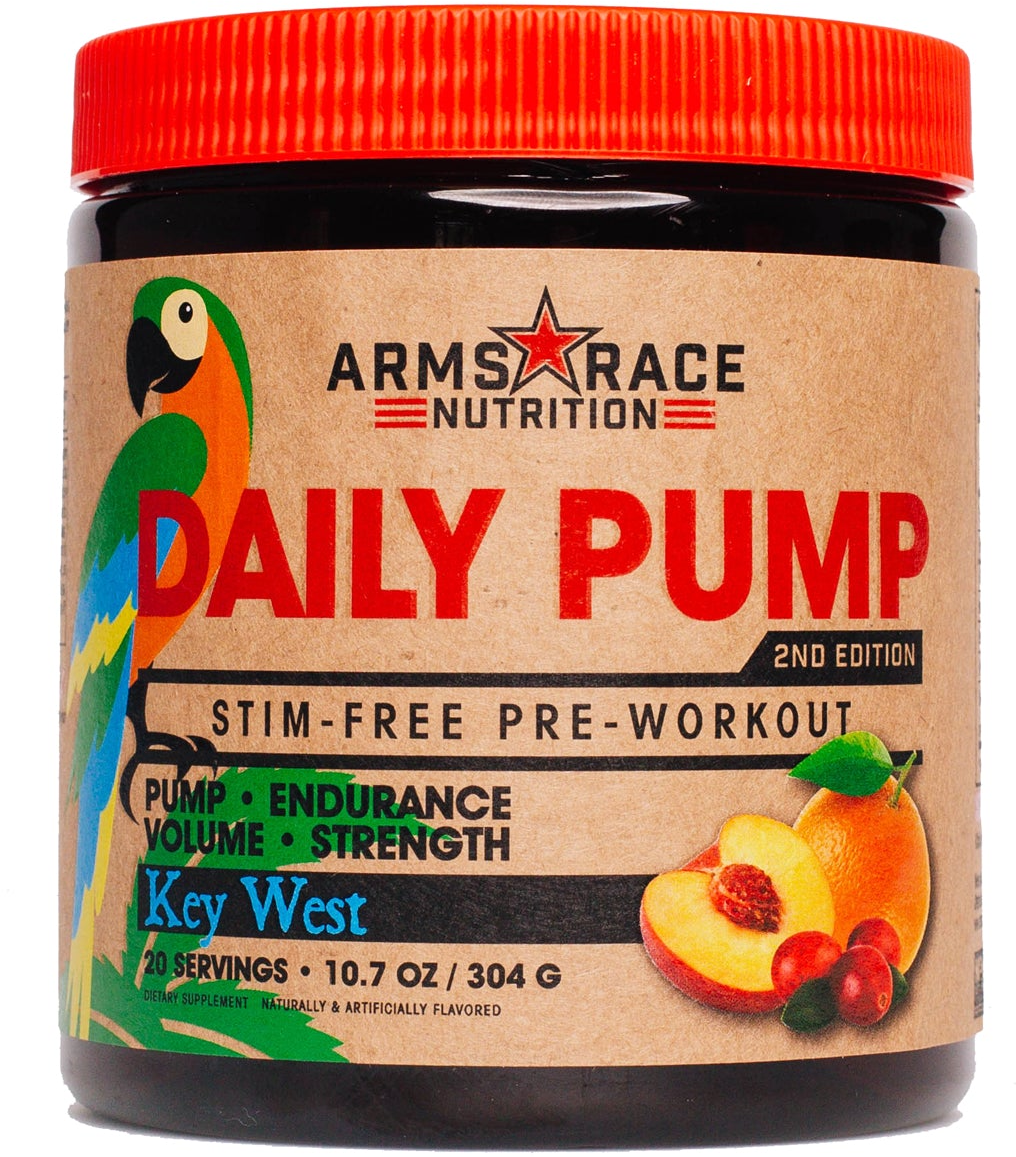

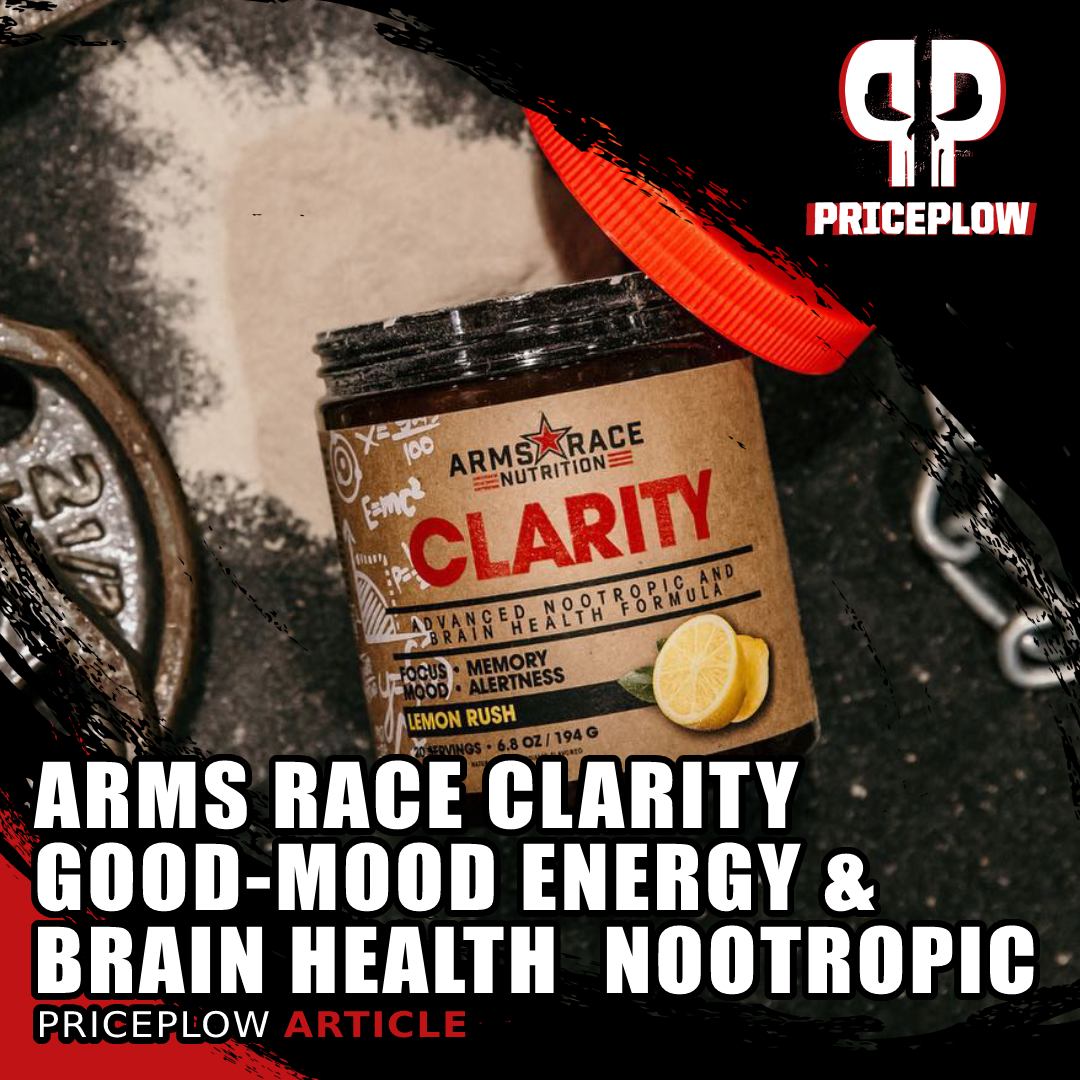

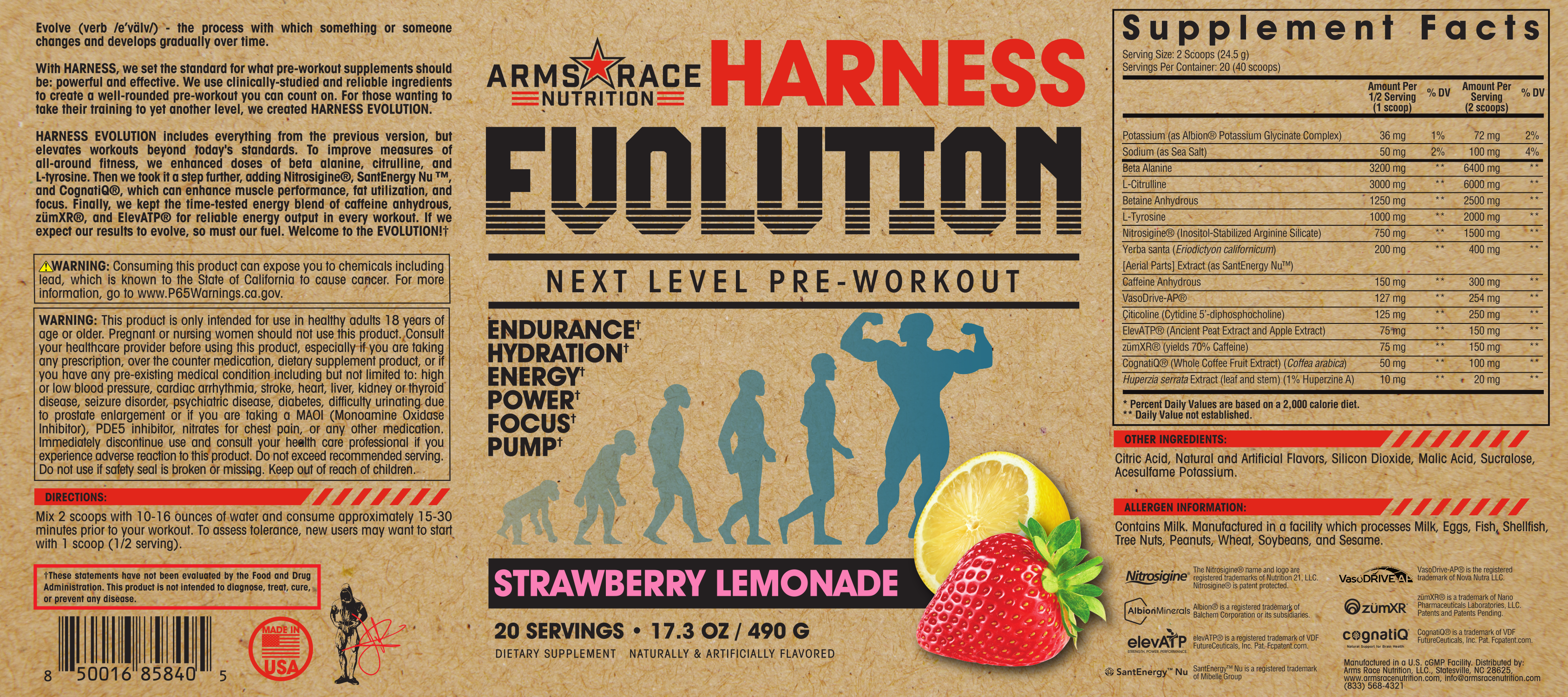


Comments and Discussion (Powered by the PricePlow Forum)